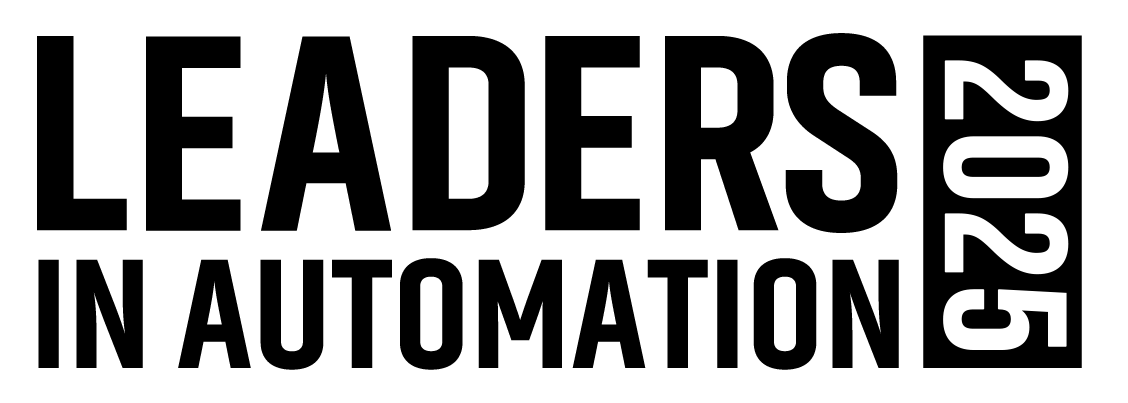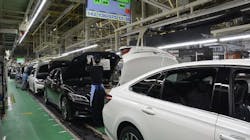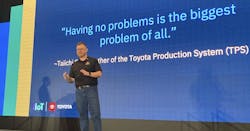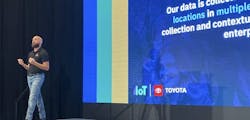From Hours to Seconds: How Toyota Eliminated Motion Waste in Manufacturing
- Toyota eliminated 240 hours of monthly waste per site by replacing fragmented digital systems with its “Nexus” architecture built on Inductive Automation's Ignition platform with MQTT communications, reducing motion waste by 97% and waiting time by 99%.
- Asset onboarding time plummeted from 33 days to less than one day through automated tag creation and connection management, allowing engineers to configure systems from a single interface instead of physically visiting multiple machines.
- Process redesign preceded technology implementation: Toyota first engaged users to understand their actual needs and applied agile methodology in two-week sprints, proving that successful digital transformation requires rethinking workflows before deploying new tools.
At Toyota North America, the Japanese concept of muda — waste in all its forms — drives continuous improvement across 15 sites and 80 shops. But even with decades of lean manufacturing expertise, the company discovered that their digital infrastructure was creating its own form of waste, consuming 240 hours monthly on repetitive tasks at each site.
"We believe that having problems is a good thing because it helps us uncover our deficiencies and waste," said Chase Brown, lead IIoT architect at Toyota North Amerixa, during his presentation at Inductive Automation’s annual Ignition Community Conference. "The teachings of Taiichi Ohno, the father of the Toyota Production System, said having no problems is the biggest problem of all."
The problem Toyota uncovered was significant: their data collection processes were riddled with motion waste, over-processing and waiting—three of the costliest forms of muda in manufacturing operations.
The hidden cost of digital fragmentation
Toyota's challenge wasn't a lack of data or technology. The company had always collected manufacturing data, but it existed in fragmented systems across their enterprise. Engineers and technicians found themselves logging into multiple systems, redeploying tags and reconfiguring connections repeatedly.
Despite having access to advanced manufacturing technologies, Toyota's breakthrough came from redefining their processes first, then selecting and implementing technology to support those improved processes.
"Motion is a huge waste for us,” Brown said, “because we have people that are going to numerous different systems, whether they're logging in remotely or going to a kiosk on the floor to log in to create connections to individual PLC tags to start the data collection process."
This motion waste cascaded into over-processing, as multiple teams would often connect to the same PLC from different systems, creating duplicate data and duplicate work. "This amounted to around 240 hours wasted every single month on repetitive tag and creation management at each of our sites," Brown noted. "Think about what could be done if those resources were freed up to deliver value and not manage a status quo process."
Toyota's traditional point-to-point integration architecture also created data silos where information was "everywhere and nowhere," lacking context and relationships, Brown said. As the company continued to build and deploy new systems, the complexity only increased, making troubleshooting nearly impossible.
Dealing with architecture issues
Toyota's experience reflects a common challenge in manufacturing: the accumulation of specialized systems that solve individual problems but create integration complexity over time. In such cases, each system typically requires its own connections, its own data management processes and its own maintenance procedures.
We measured and tested it [Ignition] against all the competitors in the market, and no one else was close. It's a rapid development environment that suits all of our needs, both on the OT side as well as on the IT side.
Explaining how this issue existed at Toyota North America, Brown gave an example of a scenario where he needed to solve a production problem for the business.
"I know I need to get data from multiple systems. Maybe system one is a system I built, so I know exactly where the data is. System two might be our enterprise asset management. System three could be MES (manufacturing execution system). System four could be a logistics system. I need all these data points to solve the business problem, but I don't even know where to go yet."
Scenarios like this typically consumed hours of investigation time before engineers could even begin addressing an actual business problem, Brown said. And even after identifying data sources and access methods, validation remained challenging due to the disparate nature of the systems.
Crafting a unified correction
Emphasizing that solutions to problems like this require more than just new technology, Jason Denham, principal engineer and technical product owner at Toyota North America, said: "There's a lot of talk around OT and IT convergence, and that focus is typically around tools and technology. But there's also the process to consider — the agile methodology."
Toyota's approach aligned with its core philosophy that problems should be solved with process first, technology second. Rather than starting with a technology solution, they engaged directly with users to understand their specific needs, particularly around troubleshooting machine and line issues that were causing production losses.
The solution centered on creating what they call "Nexus" — a unified architecture that serves as the intersection where “data and people meet,” Brown said. This central data operations layer now connects everything in Toyota’s manufacturing sites through a single MQTT broker, whether the data originates from PLCs or IT systems.
"All that data moves into a semantic hierarchy, and we build relationships on that through other systems," Brown explained. "By creating this architecture, we've been able to eliminate the over-processing of data through schema management, ensuring that our data structures are standardized throughout our sites and entire data architecture."
The technology foundation for Nexus relied heavily on Inductive Automation's Ignition platform. "We looked at a lot of software out there for this and we chose Inductive Automation's Ignition," Denham said. "We measured and tested it against all the competitors in the market, and no one else was close. It's beyond stable, beyond flexible. It's a rapid development environment that suits all of our needs, both on the OT side as well as on the IT side."
The edge computing edge
Toyota's initial approach involved building what they call "Tag Genie," a user interface within Ignition Perspective that could instantiate connections and build tags automatically. However, the team realized that, by doing this, they were simply "redoing the status quo with new technology."
The teachings of Taiichi Ohno, the father of the Toyota Production System, said having no problems is the biggest problem of all.
The breakthrough came when they saw the value of incorporating edge clients. In this case the edge clients are industrial PCs running Docker-based containers with Ignition Edge. This positions the devices and software at the network edge, right next to machines and processes. This eliminated the need for maintenance teams and engineers to physically visit each client to create connections.
"We connected those edge devices to the MQTT broker that was already in place, and we built out an enterprise message bus for our data," Denham said. "We also enabled remote procedure calls over MQTT via Sparkplug B and connected that into our backends."
This system creates two MQTT Sparkplug B tags when deploying Ignition Edge: a command tag that instantiates PLC connections and creates tags, and a response tag for user feedback. Users can now log into the system through a single interface, configure their requirements and watch as the system automatically creates connections, tags and begins publishing data — all typically in less than 30 seconds.
"We could scale that to 8,000, 100,000 or a million tags and we wouldn't see that much degradation in the time that it takes to actually deploy this,” Denham added, “and we can deploy it to multiple assets all at once."
Measurable impact on muda
The results of Toyota's efforts here directly addressed the three types of muda they identified:
- Motion waste saw a 97% reduction in repetitive tag setup and configuration. Instead of technicians moving between multiple systems and physical locations, they could accomplish the same tasks from a single interface.
- Over-processing was essentially eliminated, with duplicate connections and redundant data collection relegated to the past. Toyota’s Nexus ensures that each data point exists in one place with proper context and relationships.
- Waiting time decreased by 99%, transforming processes that once took days or hours into operations completed in seconds or minutes.
But Brown said the most dramatic improvement came in asset onboarding. Under the old process, bringing 200 assets online took an average of 33 days. With the new system, the same task is completed in less than a day and can be accomplished in under an hour when all necessary information is readily available.
"We just talked to one of our sites a week or so ago about this," Brown said. "Consistently for them, deploying to just a few assets took a couple of hours. Now, with Tag Genie, they're deploying all of those assets in under 10 seconds."
Lessons from Toyota’s experience
Toyota's success with this unified architecture approach — starting with an evaluation of its processes — provides several key insights for manufacturers pursuing their own digital transformation initiatives:
- Start small and scale. Toyota began with a pilot program on a small line, focusing on specific use cases that could provide value quickly. This approach enabled them to prove the concept, gain user buy-in and then scale with confidence.
- Process comes before technology. Despite having access to advanced manufacturing technologies, Toyota's breakthrough came from redefining their processes first, then selecting and implementing technology to support those improved processes.
- User engagement is critical. Rather than implementing a solution and moving on, Toyota continues working with users daily, empowering them to solve their own problems rather than creating dependency on IT support.
- Foundation matters for future innovation. Brown emphasizes that having every data point, contact and relationship properly defined is foundational: "You don't get to an AI-ready ecosystem, a digital twin or edge intelligence without that."
The transformation also demonstrates how modern manufacturing can benefit from agile development methodologies typically associated with software development. Toyota implemented this new system in two-week sprint cycles, gathered continuous user feedback throughout and delivered incremental value throughout the development process.
The use of containerization and Kubernetes for orchestration provides Toyota with horizontal and vertical scaling capabilities without downtime, ensuring the system can grow with the company’s needs, said Brown.
More importantly, the abstraction layers they've built allow their existing 500+ manufacturing applications to continue operating while connecting into the unified architecture.
"We decided that all of those Kaizen systems, the 500 manufacturing apps, they're still great, but we built in abstraction layers to them so that they can connect into this. This way, there's no more duplicate data and no more data silos," Brown said.
More digital transformation insights from Automation World:
About the Author
David Greenfield, editor in chief
Editor in Chief

Leaders relevant to this article:


